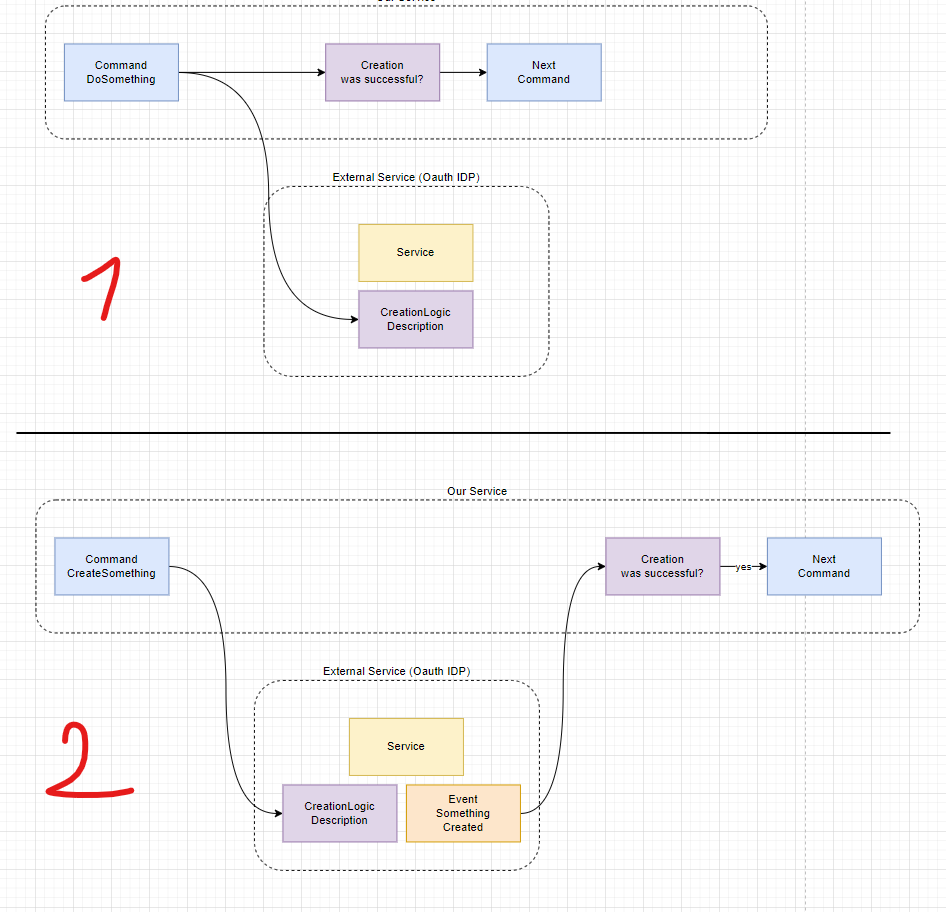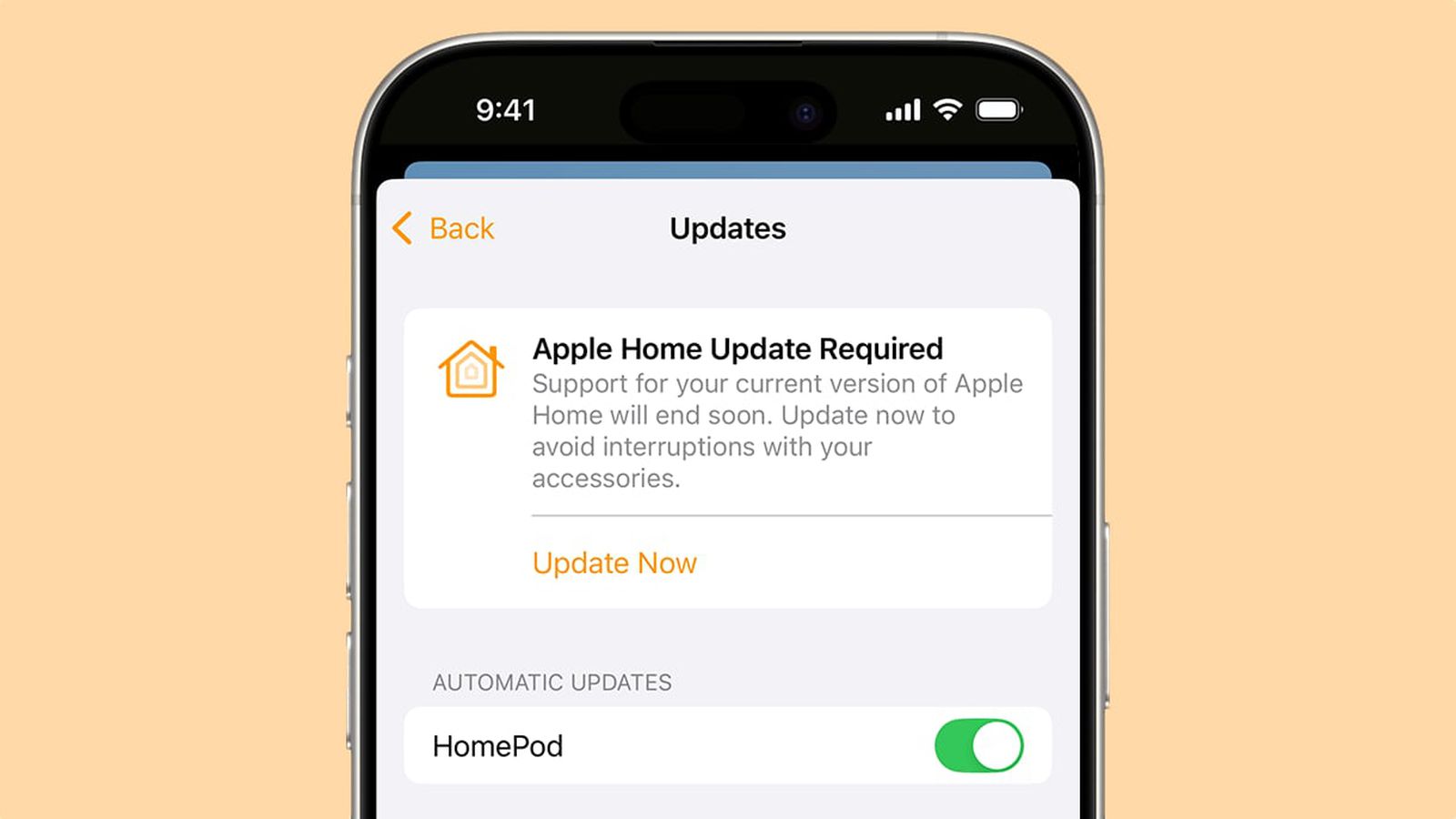The Backend Shift: Leveraging Open Source Powerhouses for Faster, Leaner Apps
For years, building a robust backend often meant reinventing the wheel. Custom authentication, database management, task queues, search functionality – the list of "standard" components to build and maintain from scratch was long. But the landscape is changing, and for the better. Developers are increasingly shifting towards a more composable approach, leveraging specialized open-source products to handle common backend tasks. This allows teams to focus on unique business logic and deliver features faster. This isn't just about grabbing a few libraries; it's about architecting applications around powerful, standalone open-source systems that often offer managed services alongside their self-hostable core. Think of it as assembling a dream team of specialists rather than relying on a single jack-of-all-trades. Why the Shift? The Allure of Open Source Components So, what's driving this move away from monolithic, entirely custom-built backends? Several compelling factors are at play: Accelerated Development: Why spend weeks building auth or a real-time data layer when you can integrate a battle-tested solution in hours or days? Open-source tools provide ready-made building blocks, drastically cutting down development time. This means your team can focus on the unique value proposition of your application. Cost-Effectiveness: While not always "free" (especially if you opt for managed hosting or require significant operational resources for self-hosting), open-source solutions can significantly reduce upfront software licensing costs. Moreover, by offloading common tasks, you can potentially reduce the engineering effort spent on undifferentiated heavy lifting. Flexibility and Control: Open source means you have access to the codebase. This transparency allows for customization and deeper understanding. Crucially, it helps avoid vendor lock-in. If a managed provider's terms change or their service no longer meets your needs, you often have the option to self-host or migrate to another provider supporting the same open-source core. Vibrant Communities and Transparency: Popular open-source projects are backed by active communities. This translates to a wealth of documentation, tutorials, third-party integrations, and readily available support through forums and chat channels. The open nature also means more eyes on the code, potentially leading to faster bug fixes and security vulnerability identification. Innovation on Tap: Open-source communities are often at the forefront of innovation. By adopting these tools, you gain access to cutting-edge technologies and paradigms without having to develop them in-house. Modularity and Scalability: Many modern open-source backend tools are designed to be modular and scale independently. This allows you to pick and choose the components you need and scale them according to demand, leading to more efficient resource utilization. Meet the Open Source All-Stars: Powering Your Next Backend The ecosystem of open-source backend tools is vast and growing. Here are some standout examples across various categories, helping you replace chunks of what would traditionally be custom backend code: 1. Backend-as-a-Service (BaaS) & Databases These platforms provide a comprehensive suite of backend functionalities, often including database, authentication, storage, and real-time capabilities. Supabase (supabase.com): An open-source Firebase alternative built on PostgreSQL. It offers a sleek UI, real-time subscriptions, authentication, edge functions, and storage. If you love Postgres and want a Firebase-like experience, Supabase is a top contender. Replaces: Custom database setup, ORM, auth system, basic file storage, real-time pub/sub. Appwrite (appwrite.io): A secure, open-source backend server that provides developers with a set of easy-to-use REST APIs to manage their core backend needs. It supports various authentication methods, databases (MariaDB, PostgreSQL in the future), functions, storage, and more. Replaces: Similar to Supabase; offers broader choices for underlying tech in some areas. PocketBase (pocketbase.io): An open-source backend consisting of a single Go binary. It offers an embedded SQLite database (or you can connect to your own PostgreSQL/MySQL), real-time subscriptions, user and collection management, and an admin UI. Its simplicity is a key feature. Replaces: Simple CRUD backends, admin panels, basic auth for smaller projects. Nhost (nhost.io): Another strong Firebase alternative, Nhost leverages PostgreSQL, GraphQL (via Hasura), and serverless functions to provide a complete backend solution. Replaces: Custom GraphQL setup, auth, database management. 2. Authentication & Authorization While BaaS solutions often include auth, dedicated identity and access management (IAM) tools offer more advanced features. Keycloak (keycloak.org): A very powerful open-source identit

For years, building a robust backend often meant reinventing the wheel. Custom authentication, database management, task queues, search functionality – the list of "standard" components to build and maintain from scratch was long. But the landscape is changing, and for the better. Developers are increasingly shifting towards a more composable approach, leveraging specialized open-source products to handle common backend tasks. This allows teams to focus on unique business logic and deliver features faster.
This isn't just about grabbing a few libraries; it's about architecting applications around powerful, standalone open-source systems that often offer managed services alongside their self-hostable core. Think of it as assembling a dream team of specialists rather than relying on a single jack-of-all-trades.
Why the Shift? The Allure of Open Source Components
So, what's driving this move away from monolithic, entirely custom-built backends? Several compelling factors are at play:
- Accelerated Development: Why spend weeks building auth or a real-time data layer when you can integrate a battle-tested solution in hours or days? Open-source tools provide ready-made building blocks, drastically cutting down development time. This means your team can focus on the unique value proposition of your application.
- Cost-Effectiveness: While not always "free" (especially if you opt for managed hosting or require significant operational resources for self-hosting), open-source solutions can significantly reduce upfront software licensing costs. Moreover, by offloading common tasks, you can potentially reduce the engineering effort spent on undifferentiated heavy lifting.
- Flexibility and Control: Open source means you have access to the codebase. This transparency allows for customization and deeper understanding. Crucially, it helps avoid vendor lock-in. If a managed provider's terms change or their service no longer meets your needs, you often have the option to self-host or migrate to another provider supporting the same open-source core.
- Vibrant Communities and Transparency: Popular open-source projects are backed by active communities. This translates to a wealth of documentation, tutorials, third-party integrations, and readily available support through forums and chat channels. The open nature also means more eyes on the code, potentially leading to faster bug fixes and security vulnerability identification.
- Innovation on Tap: Open-source communities are often at the forefront of innovation. By adopting these tools, you gain access to cutting-edge technologies and paradigms without having to develop them in-house.
- Modularity and Scalability: Many modern open-source backend tools are designed to be modular and scale independently. This allows you to pick and choose the components you need and scale them according to demand, leading to more efficient resource utilization.
Meet the Open Source All-Stars: Powering Your Next Backend
The ecosystem of open-source backend tools is vast and growing. Here are some standout examples across various categories, helping you replace chunks of what would traditionally be custom backend code:
1. Backend-as-a-Service (BaaS) & Databases
These platforms provide a comprehensive suite of backend functionalities, often including database, authentication, storage, and real-time capabilities.
-
Supabase (supabase.com): An open-source Firebase alternative built on PostgreSQL. It offers a sleek UI, real-time subscriptions, authentication, edge functions, and storage. If you love Postgres and want a Firebase-like experience, Supabase is a top contender.
- Replaces: Custom database setup, ORM, auth system, basic file storage, real-time pub/sub.
-
Appwrite (appwrite.io): A secure, open-source backend server that provides developers with a set of easy-to-use REST APIs to manage their core backend needs. It supports various authentication methods, databases (MariaDB,
PostgreSQL in the future), functions, storage, and more.
- Replaces: Similar to Supabase; offers broader choices for underlying tech in some areas.
-
PocketBase (pocketbase.io): An open-source backend consisting of a single Go binary. It offers an embedded SQLite database (or you can connect to your own PostgreSQL/MySQL), real-time subscriptions, user and collection management, and an admin UI. Its simplicity is a key feature.
- Replaces: Simple CRUD backends, admin panels, basic auth for smaller projects.
-
Nhost (nhost.io): Another strong Firebase alternative, Nhost leverages PostgreSQL, GraphQL (via Hasura), and serverless functions to provide a complete backend solution.
- Replaces: Custom GraphQL setup, auth, database management.
2. Authentication & Authorization
While BaaS solutions often include auth, dedicated identity and access management (IAM) tools offer more advanced features.
-
Keycloak (keycloak.org): A very powerful open-source identity and access management solution. It offers features like Single Sign-On (SSO), social login, user federation, multi-factor authentication, and fine-grained authorization. Ideal for applications with complex security requirements.
- Replaces: Custom OAuth2/OIDC implementation, user management, role-based access control (RBAC).
-
Supertokens (supertokens.com): Provides an easy-to-implement, secure, and customizable authentication solution. It's known for its robust session management and developer-friendly SDKs.
- Replaces: Custom session management, secure token handling, social logins.
-
Ory (ory.sh): A suite of open-source services for identity (Kratos), access control (Keto), OAuth2/OIDC (Hydra), and permissions (Oathkeeper). Highly modular and scalable.
- Replaces: Building your own identity infrastructure from scratch; offers enterprise-grade components.
3. Workflow Orchestration & Background Jobs
For managing complex workflows, asynchronous tasks, and background jobs.
-
Inngest (inngest.com): An open-source, event-driven platform that allows you to run reliable background jobs, serverless functions, and human-in-the-loop workflows. It offers features like durable execution, retries, scheduling, and observability, making it easy to build complex event-driven systems.
- Replaces: Custom task queues (e.g., Celery, BullMQ setups), complex cron job management, ad-hoc script-based workflows.
-
Temporal (temporal.io): A scalable and reliable workflow orchestration platform. While it has a steeper learning curve, it's incredibly powerful for mission-critical, long-running processes.
- Replaces: Complex state machines, custom saga pattern implementations, brittle distributed transaction logic.
4. AI & LLM Application Tooling
With the rise of AI, open-source tools are emerging to help build and manage LLM-powered applications.
-
Langflow (langflow.org): A GUI for LangChain, designed to make it easy to experiment, prototype, and share LangChain applications. You can visually build complex chains and agents.
- Replaces: Writing extensive boilerplate code for LLM integrations; simplifies prompt chaining and agent creation.
-
FlowiseAI (flowiseai.com): Another visual tool for building LLM applications using LangChainJS, offering a drag-and-drop interface to create customized LLM flows.
- Replaces: Similar to Langflow, provides a no-code/low-code approach to LLM app development.
-
Dify (dify.ai): An LLM application development platform that enables you to visually build and operate AI-native apps based on models like GPT.
- Replaces: Manual setup of vector stores, prompt engineering interfaces, and agent orchestration for LLM apps.
5. Search Solutions
Adding powerful, fast, and typo-tolerant search to your application without relying on expensive SaaS.
-
Meilisearch (meilisearch.com): A lightning-fast, typo-tolerant search engine. It's incredibly easy to set up and integrate, offering a great developer experience.
- Replaces: Basic SQL
LIKEqueries, custom search indexing, simplifies full-text search implementation.
- Replaces: Basic SQL
-
Typesense (typesense.org): Another excellent open-source search engine focused on performance and ease of use. It provides typo tolerance and is designed to be a lighter-weight alternative to Elasticsearch for many use cases.
- Replaces: Similar to Meilisearch; a strong contender for application search.
-
Weaviate (weaviate.io) / Qdrant (qdrant.tech): These are vector databases, essential for AI-powered semantic search, recommendation systems, and other applications involving vector embeddings.
- Replaces: Manual implementation of vector similarity search, managing embeddings alongside traditional data.
6. Headless CMS
Decouple your content management from your presentation layer.
-
Strapi (strapi.io): A leading open-source headless CMS built with Node.js. It's highly customizable, allowing you to define your content structures and access them via a REST or GraphQL API.
- Replaces: Traditional monolithic CMSs (like WordPress in coupled mode), custom content management backends.
-
Directus (directus.io): An open-source data platform that instantly wraps any SQL database with a real-time GraphQL+REST API and an intuitive no-code app for managing its content.
- Replaces: Custom admin panels for existing databases, building content APIs from scratch.
7. Notification Systems
Manage transactional notifications across multiple channels (email, SMS, push, chat).
-
Novu (novu.co): An open-source notification infrastructure for developers. It provides a unified API to manage all your transactional notifications, with templates, subscriber management, and observability.
- Replaces: Integrating multiple provider SDKs for different channels, building custom notification templating and dispatch logic.
8. Admin Panels & Internal Tools
Quickly build internal dashboards, admin interfaces, and CRUD apps.
-
Appsmith (appsmith.com) / ToolJet (tooljet.com): Open-source low-code platforms for building internal tools and admin panels. Connect to your databases or APIs and build UIs with pre-built widgets.
- Replaces: Time-consuming custom development of internal admin interfaces.
Not a Silver Bullet: Considerations & Challenges
While the benefits are significant, adopting a composed, open-source backend strategy comes with its own set of considerations:
- Operational Overhead (for self-hosting): If you choose to self-host, you're responsible for deployment, maintenance, updates, security patching, and scaling. This requires infrastructure knowledge and operational effort. (Many tools listed offer paid cloud versions to mitigate this).
- Integration Complexity: Ensuring seamless communication and data consistency between different specialized tools can sometimes be challenging. You'll need to think about API contracts, data synchronization, and error handling across services.
- Learning Curve: Each new tool added to your stack comes with its own concepts, APIs, and best practices that your team will need to learn.
- Community Reliance vs. Enterprise Support: While community support is often excellent, it might not always meet the SLAs or dedicated support needs of large enterprises for all components. Evaluate if a paid tier or enterprise version is necessary.
The Future is Composable (and Open Source)
The shift towards leveraging open-source products for backend development is more than just a trend; it's an evolution in how we build applications. By standing on the shoulders of giants – these specialized, often community-driven tools – developers can:
- Focus on Core Business Logic: Spend less time on boilerplate and more time on what makes your application unique.
- Ship Faster: Reduce development cycles and get to market quicker.
- Build More Resilient and Scalable Systems: Leverage tools designed for specific tasks and scale them independently.
- Retain Control and Flexibility: Avoid vendor lock-in and adapt your stack as your needs evolve.
The role of the backend developer is evolving from building everything from the ground up to becoming a skilled integrator and architect, adept at selecting, combining, and managing these powerful open-source components.
What are your favorite open-source tools that are changing how you build backends? Share your thoughts and recommendations in the comments below!






































































































































































![[The AI Show Episode 145]: OpenAI Releases o3 and o4-mini, AI Is Causing “Quiet Layoffs,” Executive Order on Youth AI Education & GPT-4o’s Controversial Update](https://www.marketingaiinstitute.com/hubfs/ep%20145%20cover.png)






























































































































![Ditching a Microsoft Job to Enter Startup Purgatory with Lonewolf Engineer Sam Crombie [Podcast #171]](https://cdn.hashnode.com/res/hashnode/image/upload/v1746753508177/0cd57f66-fdb0-4972-b285-1443a7db39fc.png?#)













































-Fallout-Season-2-Teaser-00-00-36.png?width=1920&height=1920&fit=bounds&quality=70&format=jpg&auto=webp#)

























































































_Piotr_Adamowicz_Alamy.jpg?width=1280&auto=webp&quality=80&disable=upscale#)










































































































![Samsung's New Galaxy S25 Edge Takes Aim at 'iPhone 17 Air' [Video]](https://www.iclarified.com/images/news/97276/97276/97276-640.jpg)
![Apple to Launch AI-Powered Battery Saver Mode in iOS 19 [Report]](https://www.iclarified.com/images/news/97309/97309/97309-1280.jpg)

![Apple Officially Releases macOS Sequoia 15.5 [Download]](https://www.iclarified.com/images/news/97308/97308/97308-640.jpg)



































































































